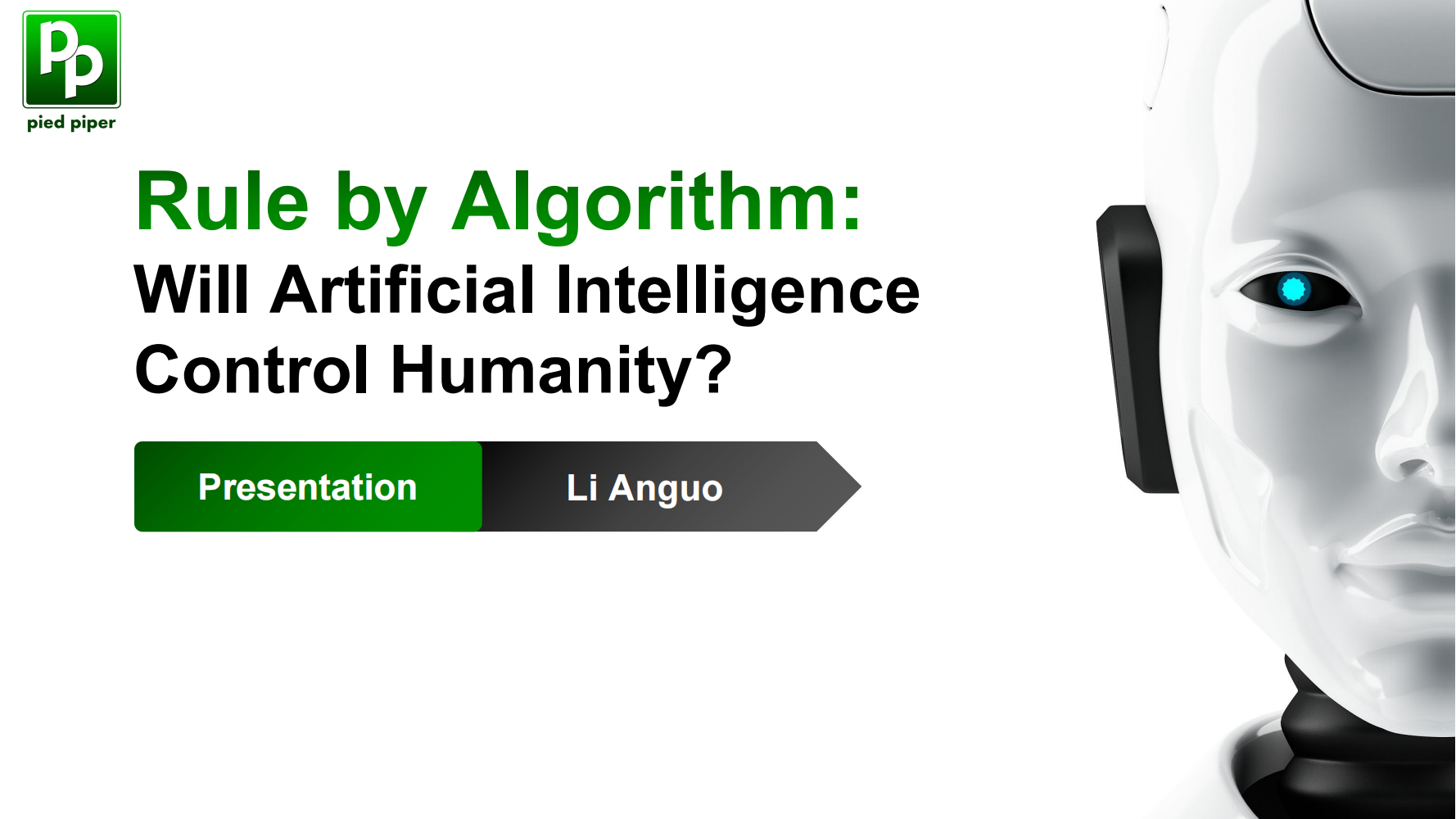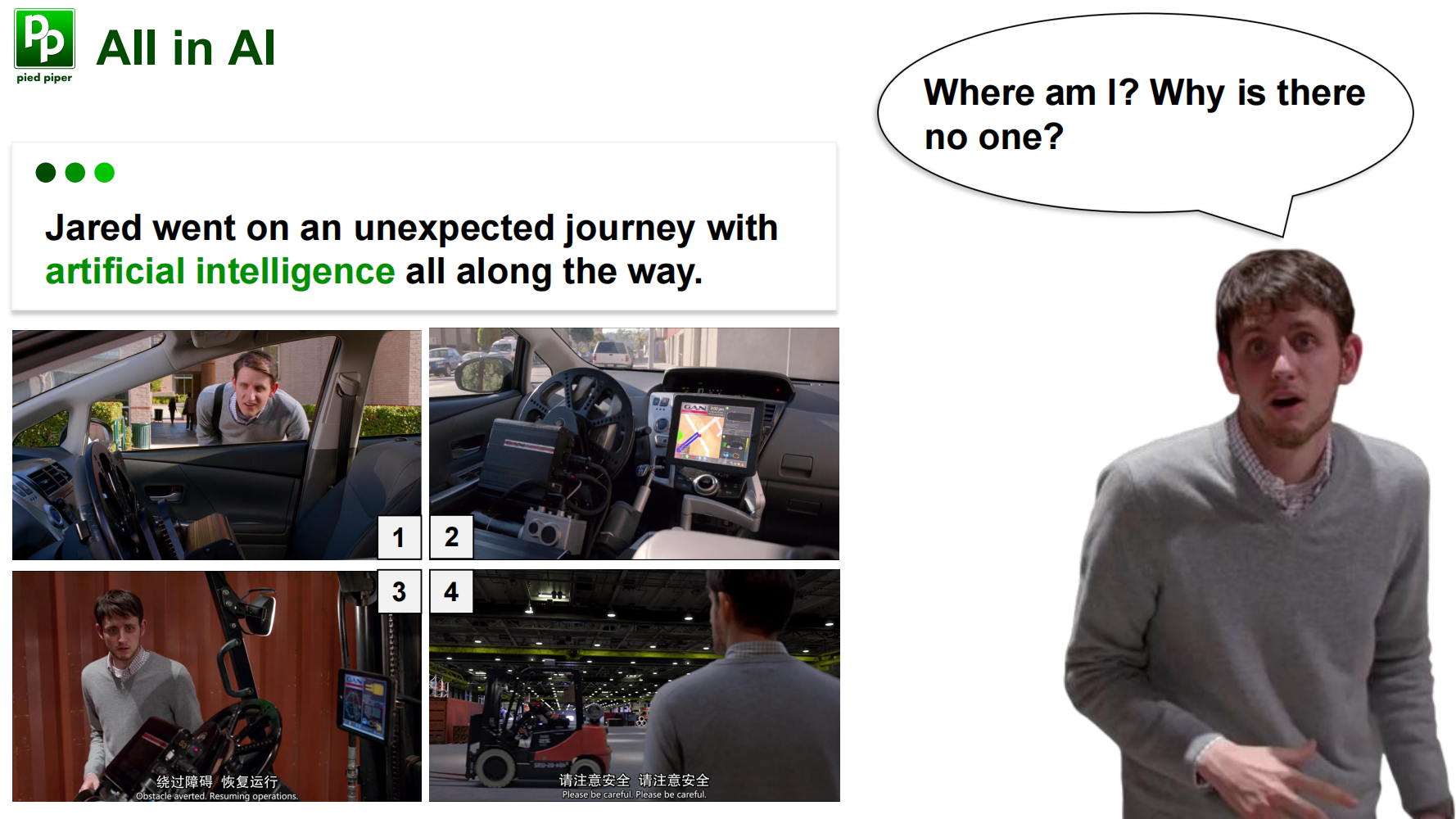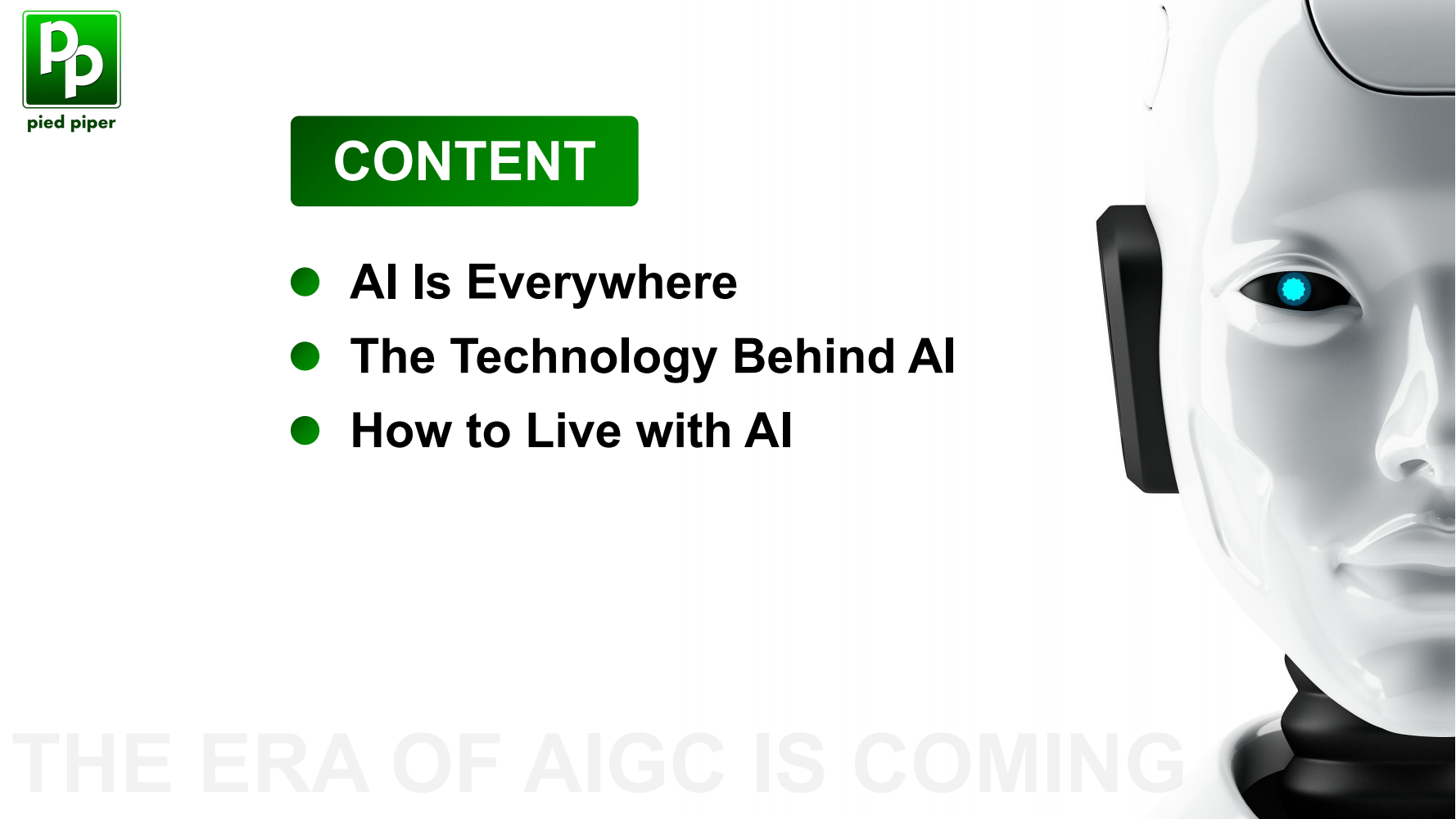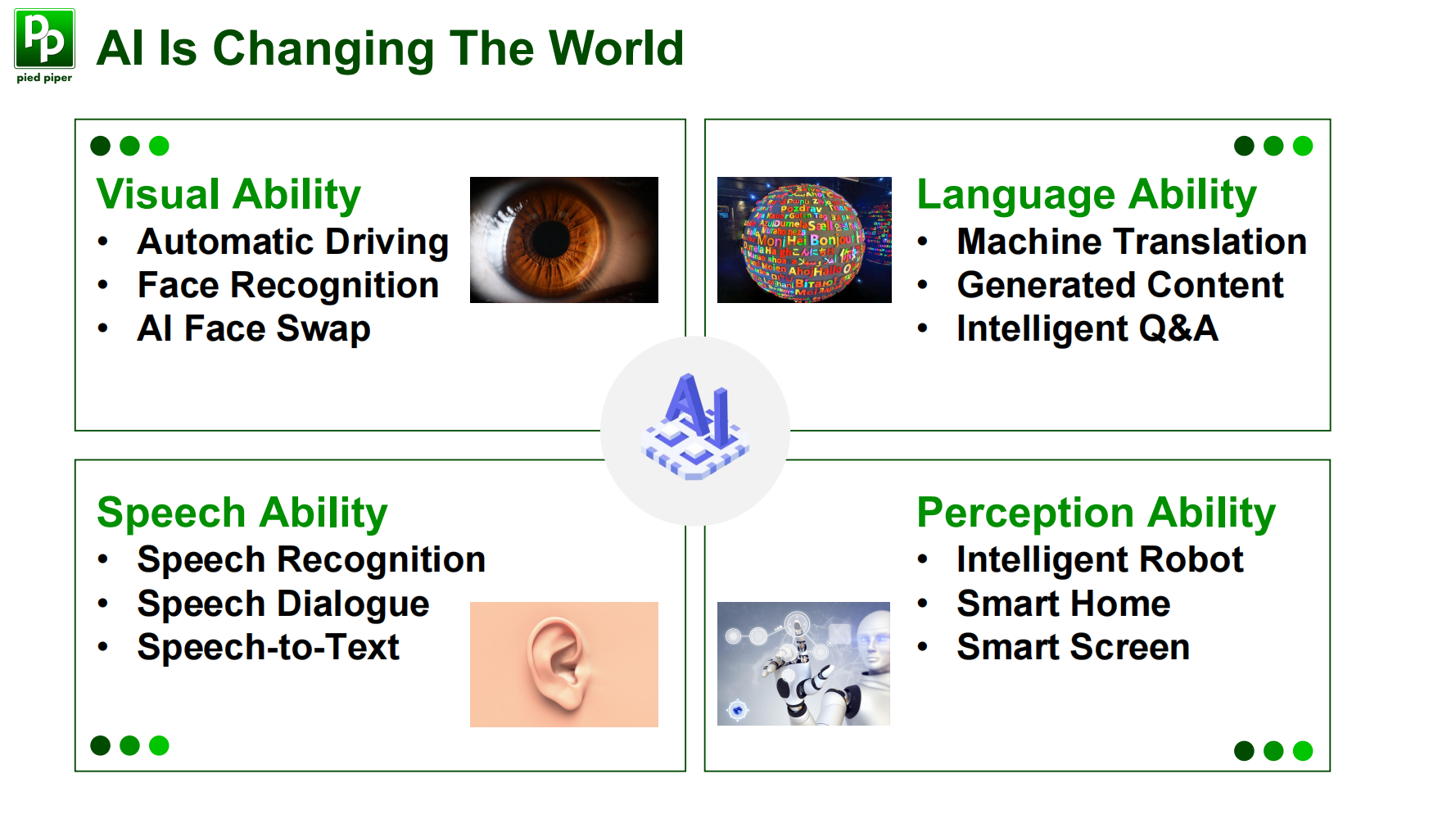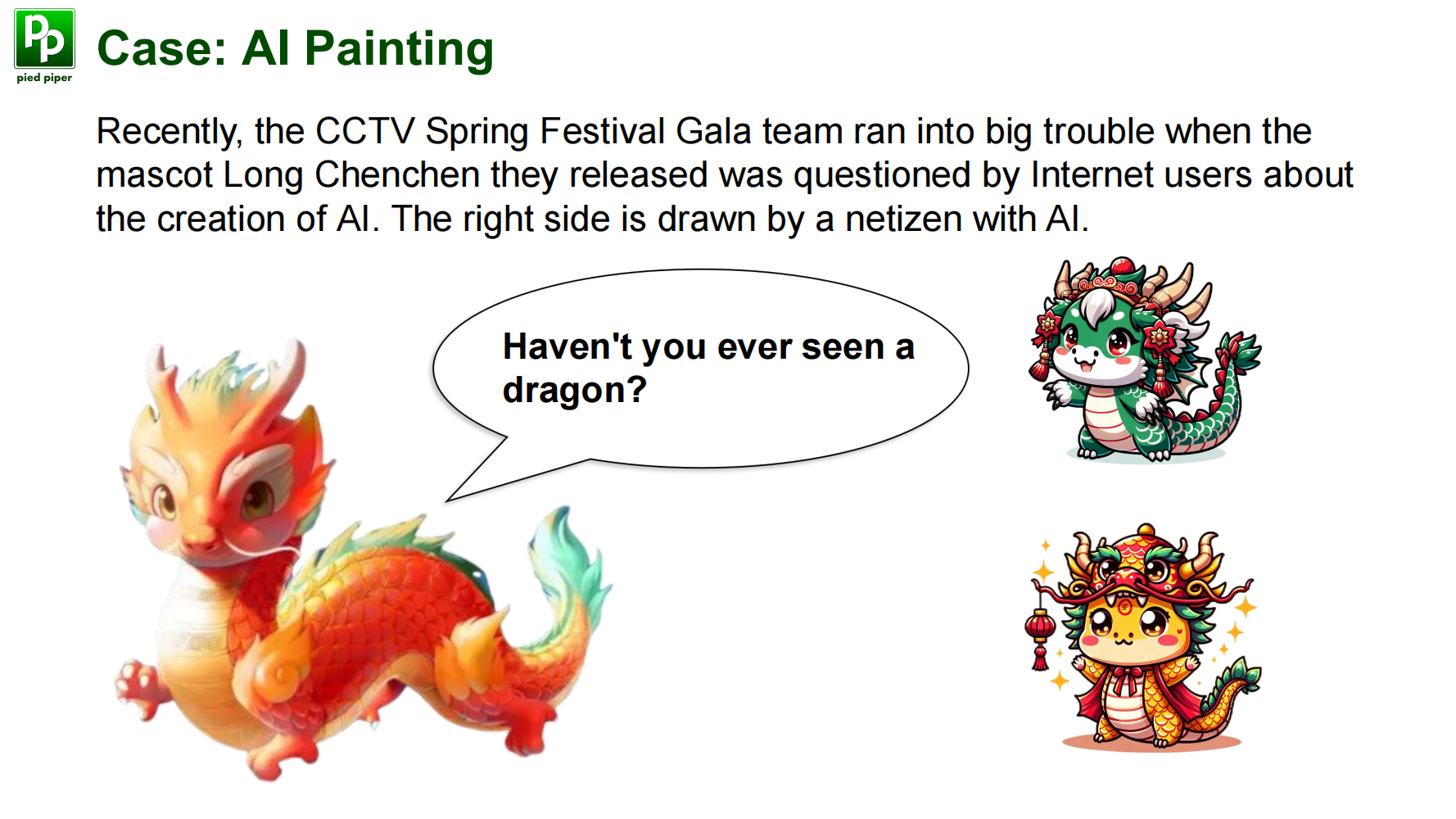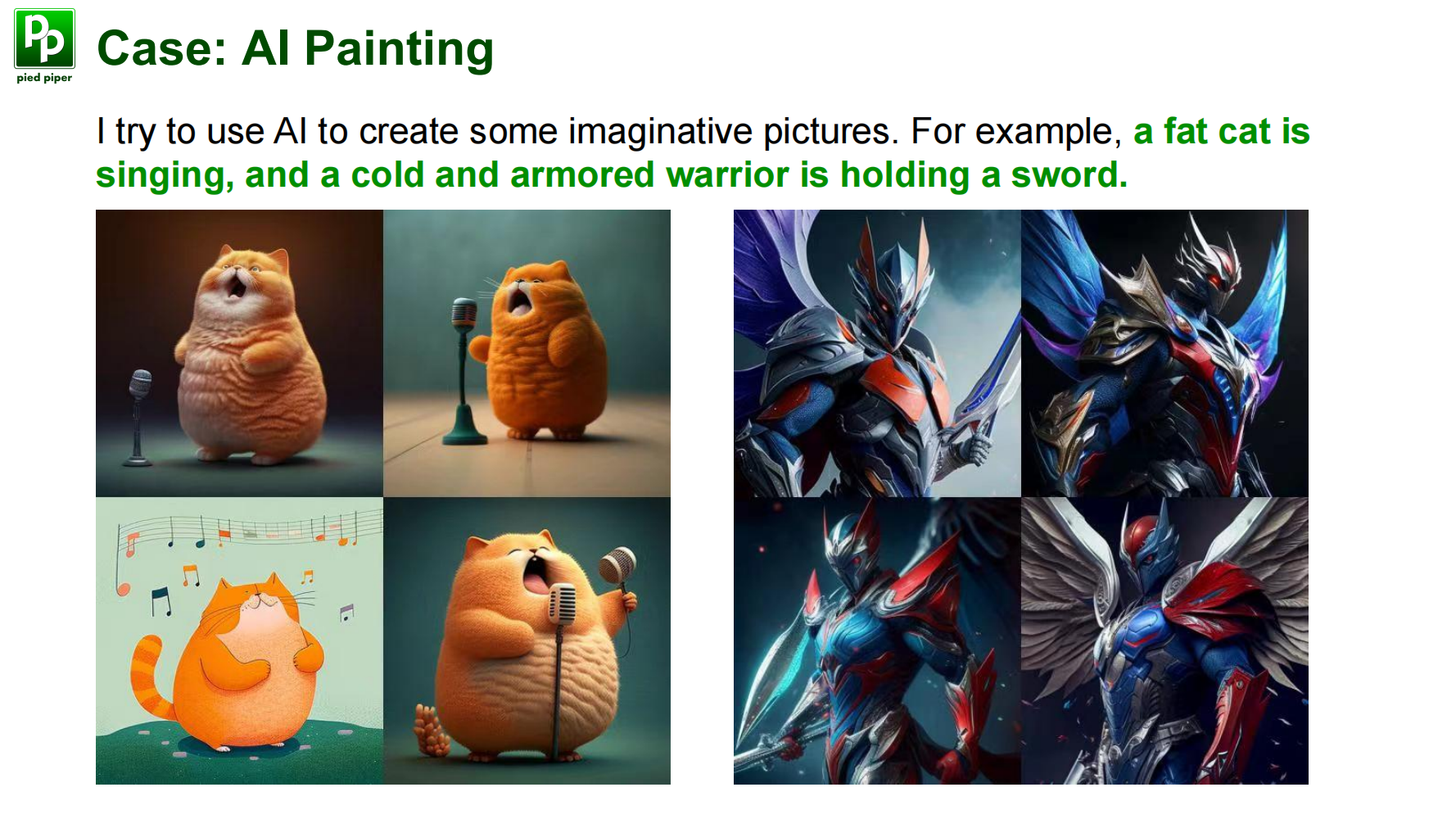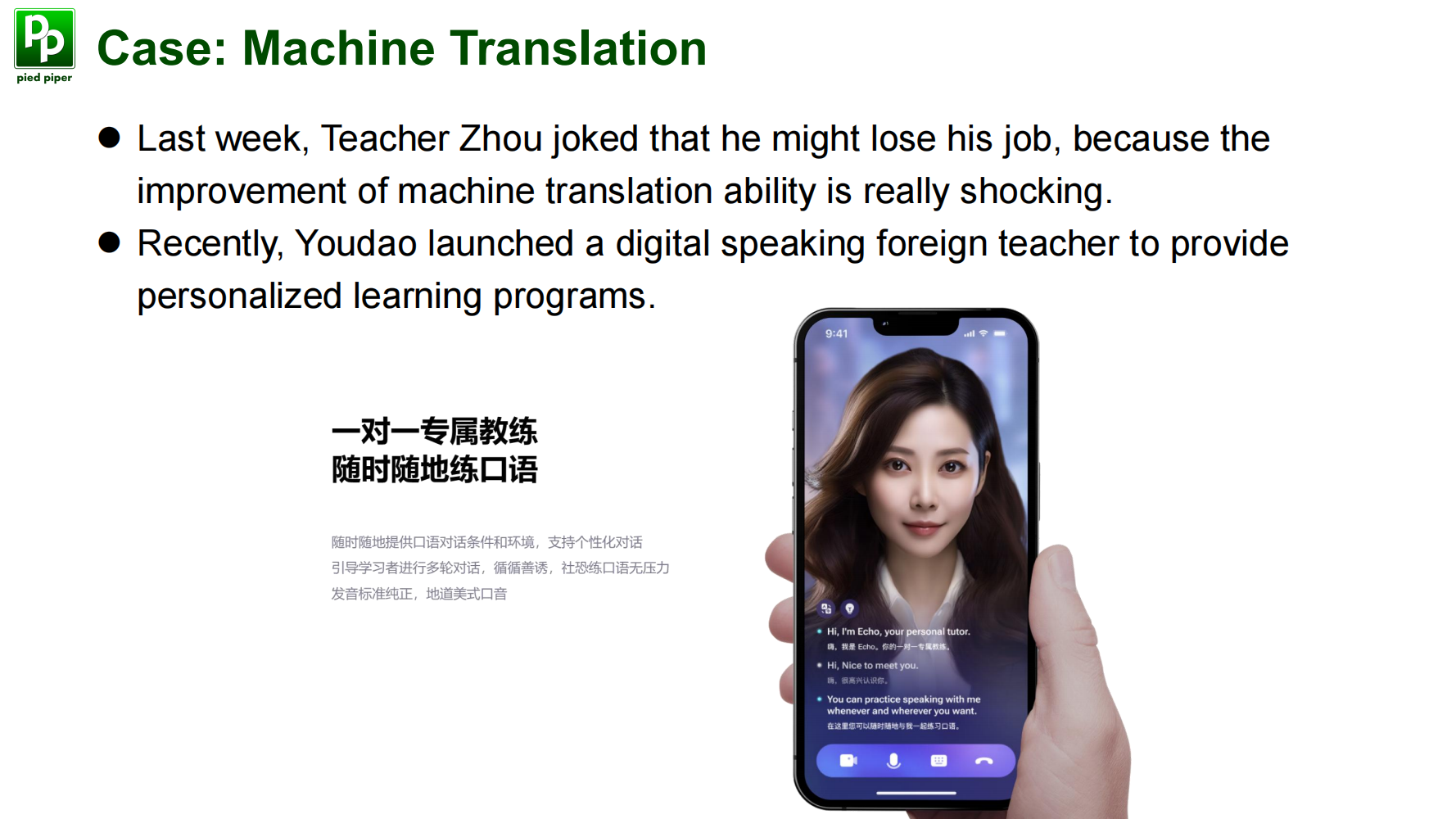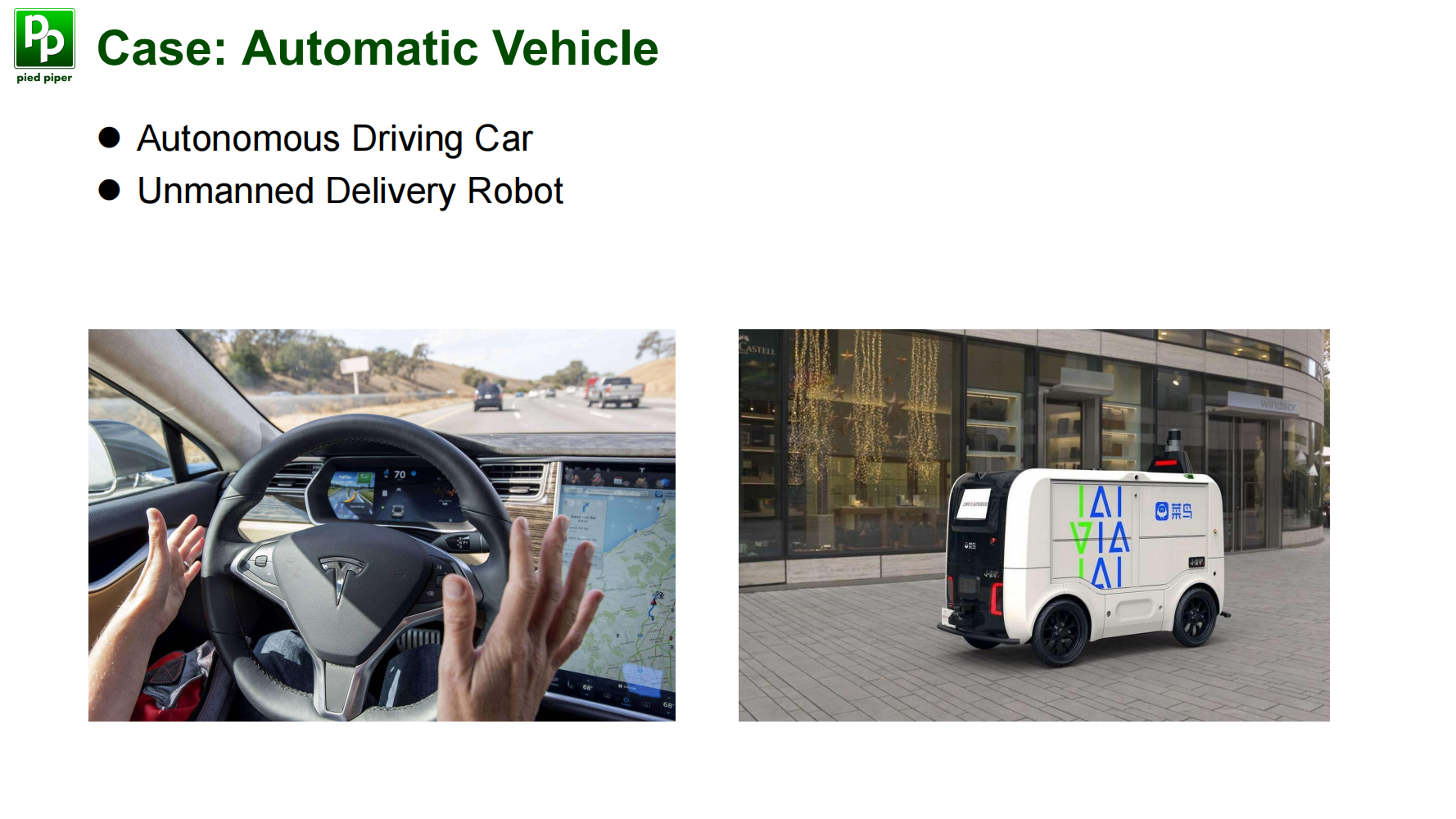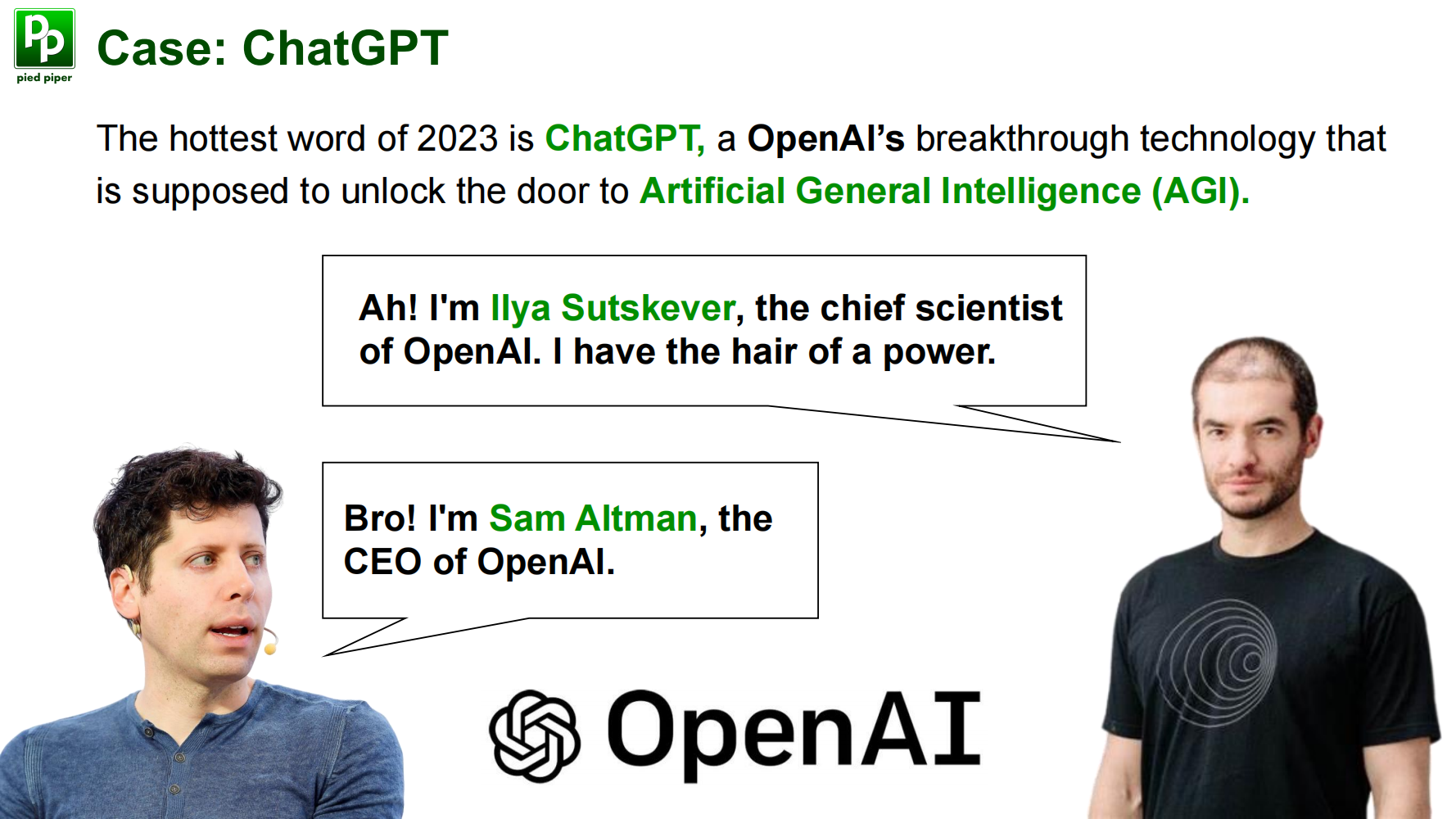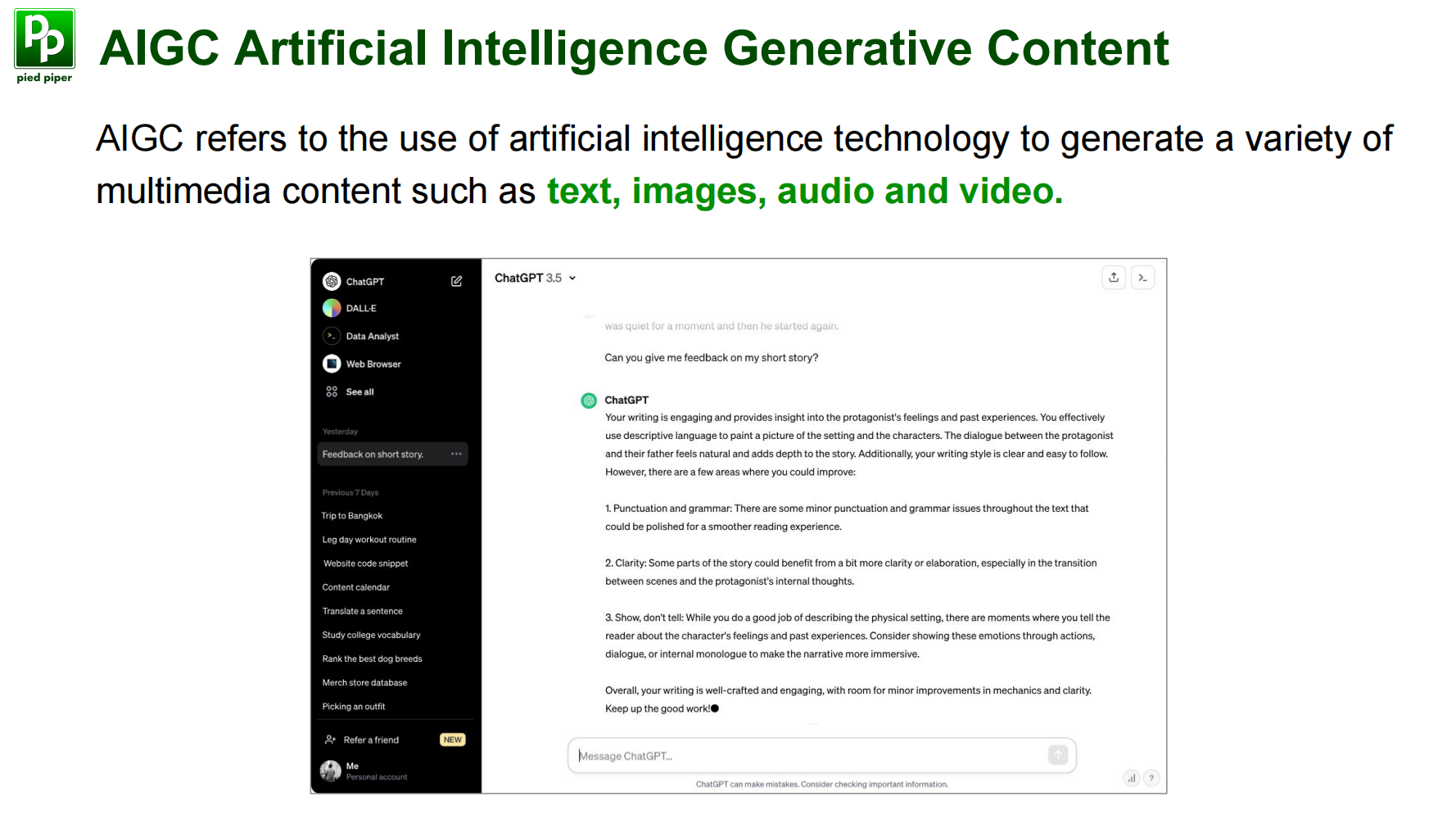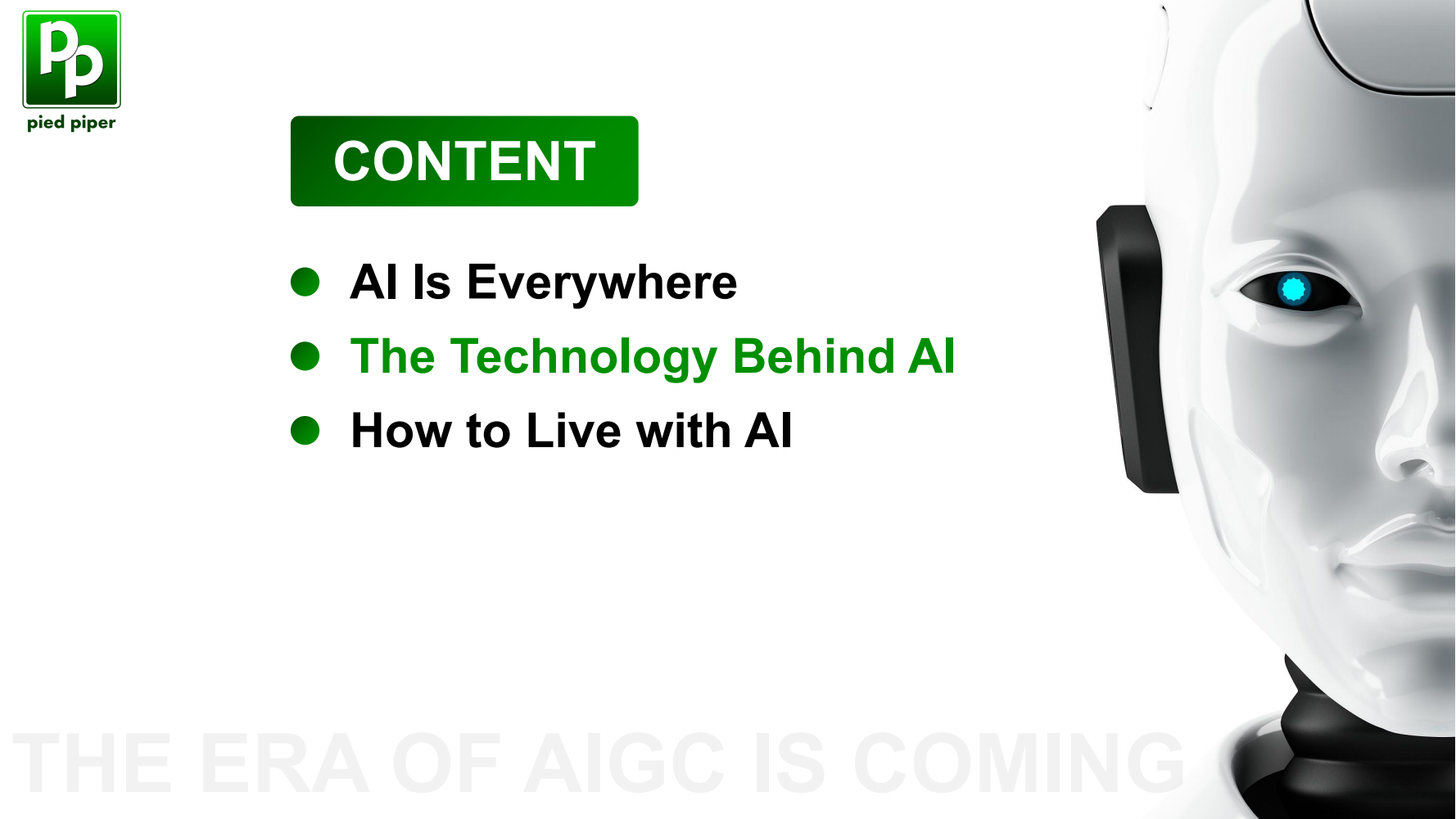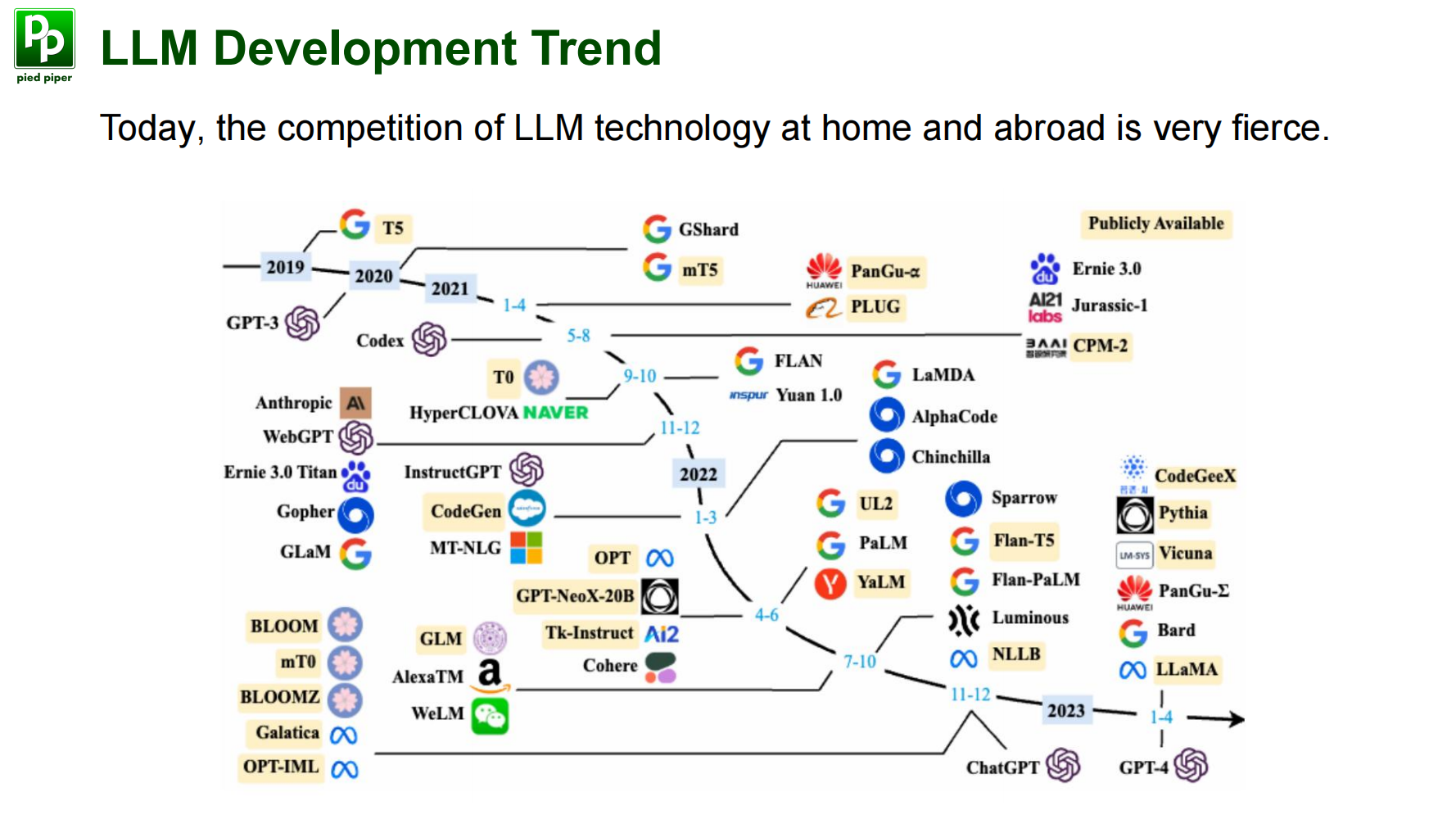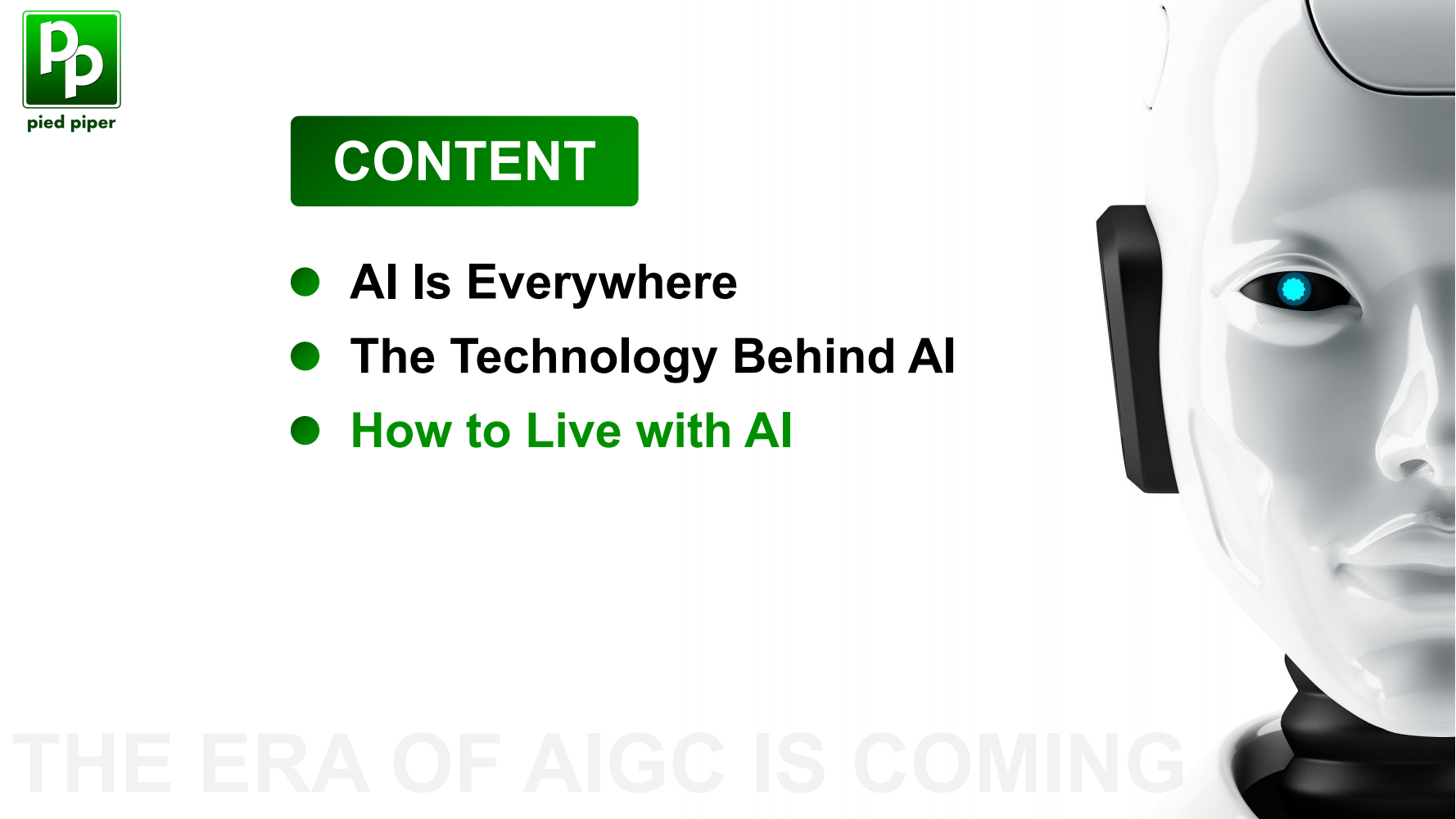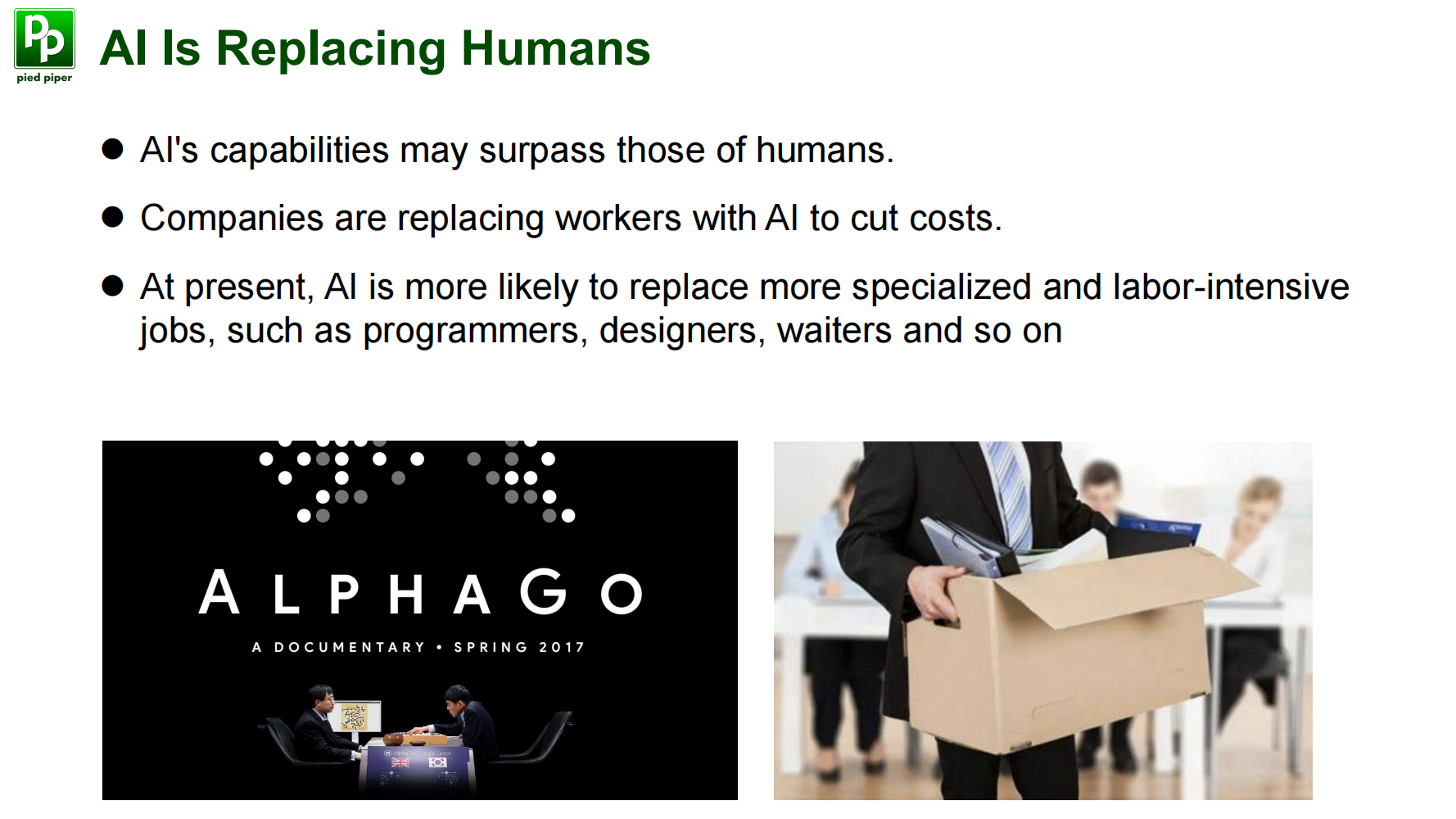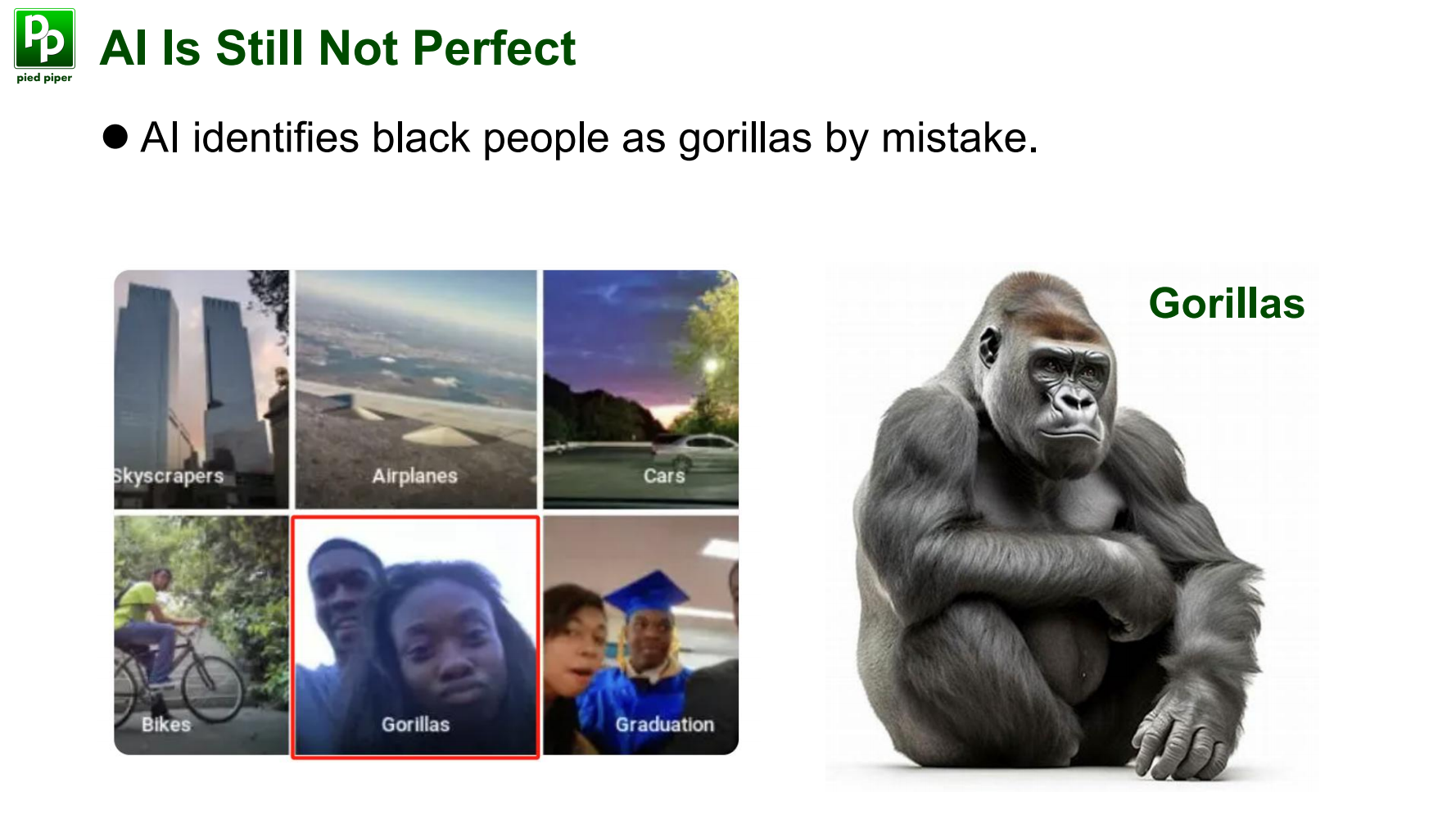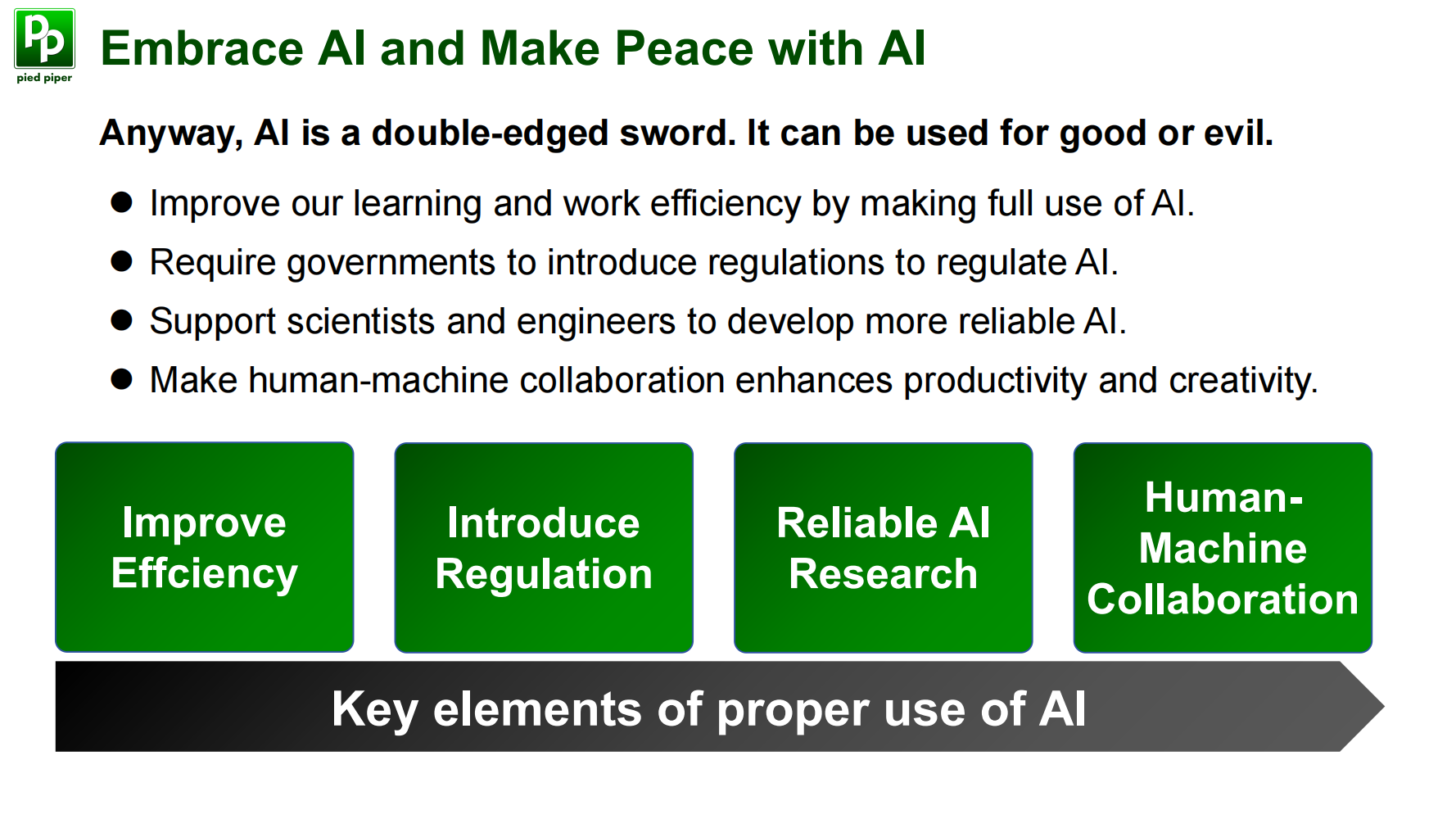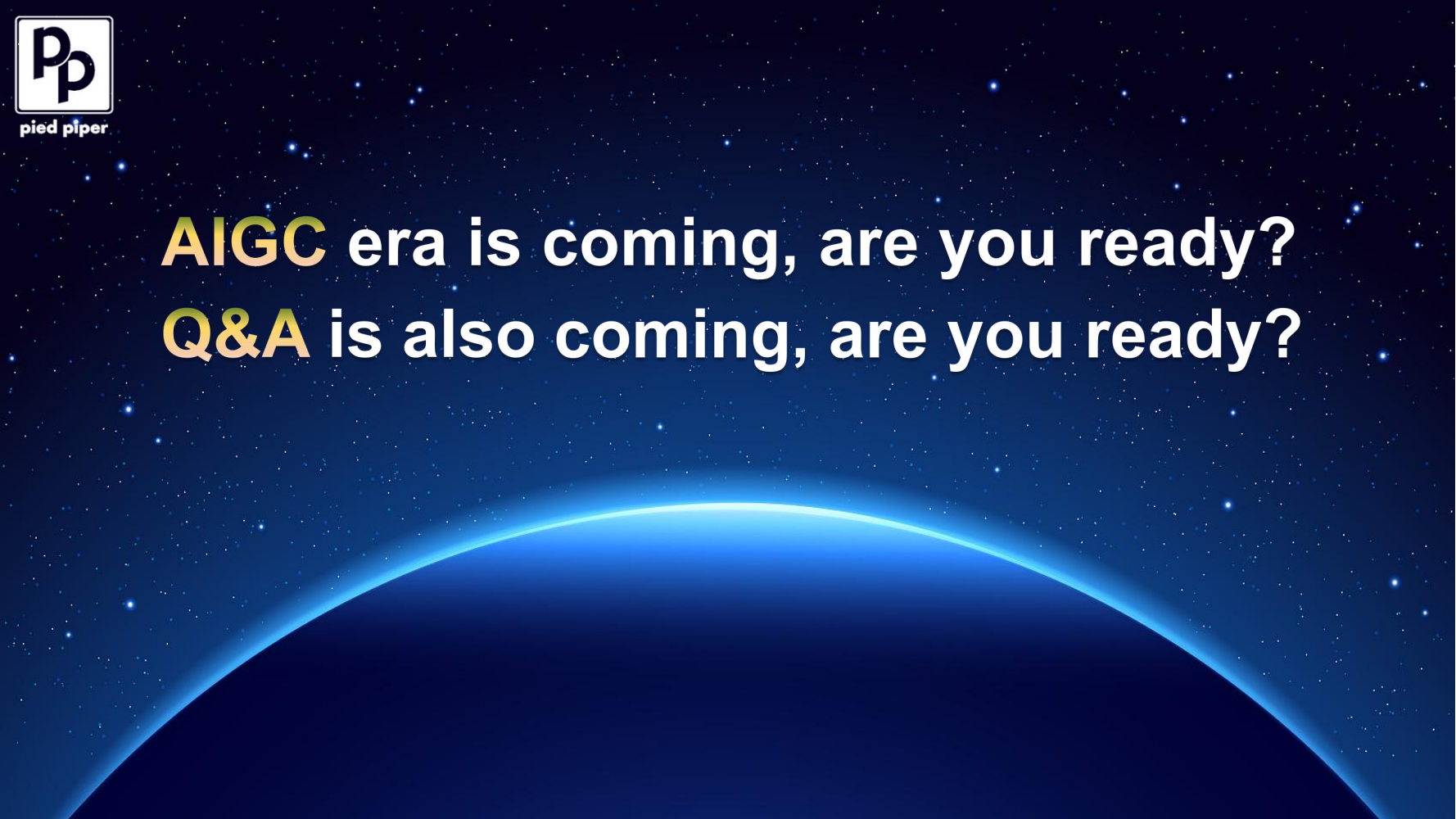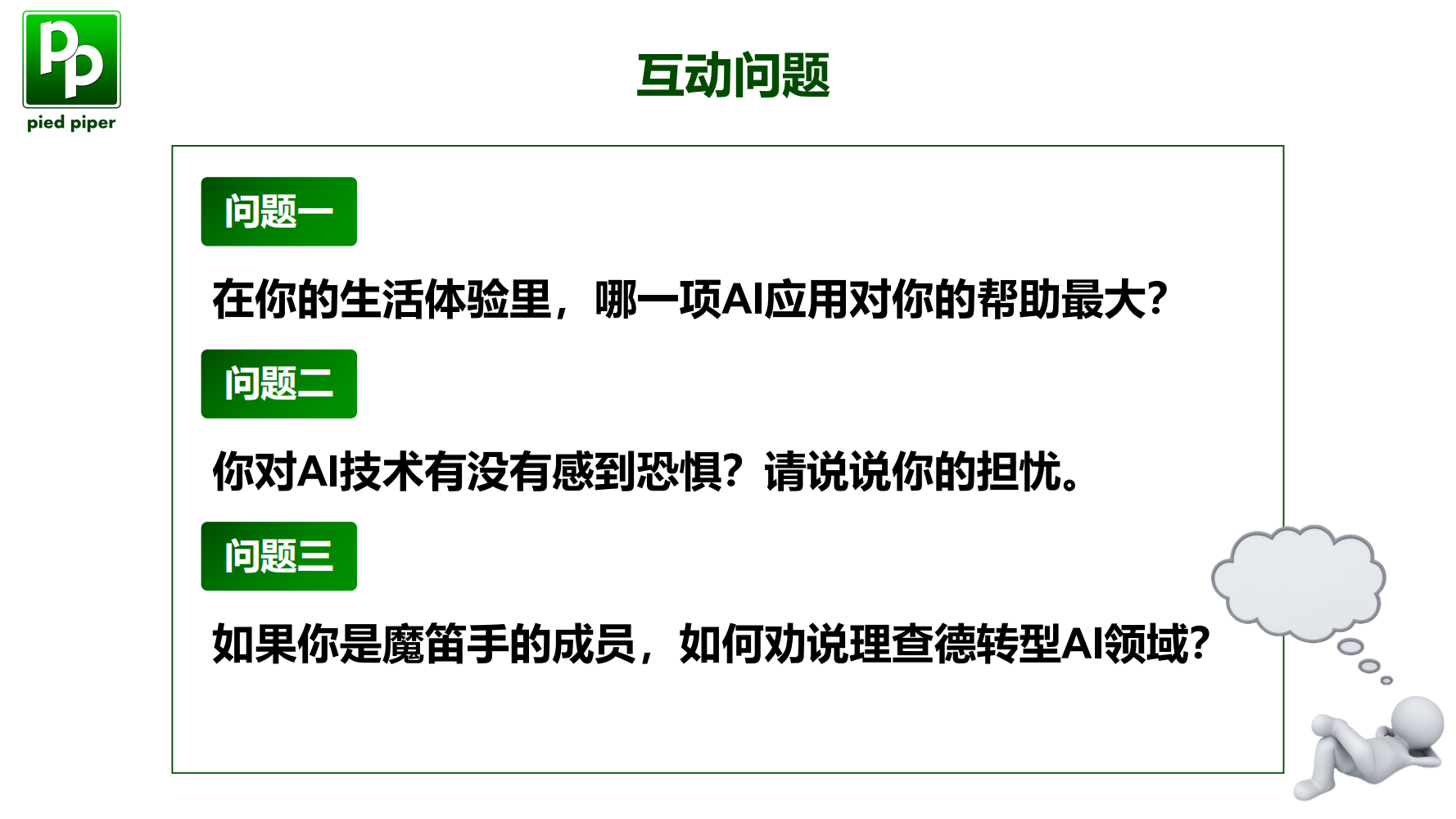Good morning, everyone. I'm today's presenter, Li Anguo, and my topic is "Rule by Algorithm: Will Artificial Intelligence Control Humanity?"
Firstly, let's revisit the gist of Episode 6 of the first season of "Silicon Valley." In this episode, Richard hired a tech prodigy named Kevin at a high price to build a system service. However, Kevin, a conceited teenager, hid the fact that he had previously brought down another bank's system. Ultimately, he ended up crashing Pied Piper's system, causing significant trouble for Richard. Another intriguing plotline was Jared's business trip mishap involving an autonomous car's erroneous instructions, leading him to be transported to a cargo platform at sea. His awakening to a vast array of shipping robots was a striking scene, reflecting both the convenience and dangers of the AI era in my view.
Now, let's focus on artificial intelligence. I'll provide an overview of three aspects: "AI is Everywhere," "The Technology behind AI," and "How to Coexist with AI."
Speaking of AI, what abilities and use cases do you think it possesses? Currently, artificial intelligence has expanded four human capabilities: visual, linguistic, speech, and perceptual abilities. Under each capability, we commonly encounter related AI applications such as autonomous driving, intelligent Q&A, machine translation, speech-to-text, and robotics. In short, AI is omnipresent.
Next, I'll briefly cite a few cutting-edge examples. Take a look at the mascot for the recent CCTV Spring Festival Gala, named Long Chenchen. Due to its non-traditionally drawn appearance, it sparked widespread speculation among netizens. Many believe Long Chenchen was created by AI. AI-generated art, like this mascot, is a prime example, gradually replacing some professional artists.
I've also attempted to create some visuals using AI, like a chubby cat singing or a steel-clad warrior wielding a sword. Do you find this chubby cat adorable?
Moreover, machine translation and digital foreign language instructors might indeed replace human translators.
Increasingly, more people are buying self-driving cars despite their associated risks, marking intelligent connected vehicles as an unstoppable trend.
In the shopping scene, unmanned delivery vehicles are already operational, capable of autonomously planning routes.
Of course, the annual buzzword undoubtedly is ChatGPT. It has disrupted the human order and is considered a breakthrough technology towards achieving general artificial intelligence. OpenAI is the company behind inventing ChatGPT, a team comprised mostly of genuine tech geniuses.
ChatGPT is an AGI (Artificial General Intelligence) technology.
AIGC refers to the use of artificial intelligence technology to generate a variety of multimedia content such as text, images, audio and video.
Let's take a brief look at AI technology. Deep Learning (DL) serves as the foundational technology behind AI, constructing predictive models by assimilating features from vast datasets, mirroring the neural networks of the human brain. It currently represents the predominant approach to AI.
AI demands more data, model parameters, high-performance computing, and efficient algorithm design. The latest research revolves around large language models (LLMs), which is also my area of study. The essence of LLM lies in sequentially predicting the next word based on context, requiring the model to learn features from extensive texts and subsequently generate relevant content based on user input prompts or instructions. For instance, when I inquire about the location of Beihang University, it provides me with detailed information.
Presently, there's intense competition in LLM technology both domestically and internationally.
Finally, we must ponder on how to coexist with AI. It appears that AI is gradually replacing humans, surpassing human reasoning abilities and leading to job displacement, particularly among specialized professionals like programmers and designers. However, AI isn't flawless; it can introduce discrimination and bias, such as mistaking black individuals for gorillas. AI sometimes provides incorrect information, like considering Toronto as the capital of Canada. Furthermore, it might distort facts, leading to the spread of rumors and infringement of individuals' rights.
Hence, we need to construct a human governance framework for AI from four perspectives:
1. Enhance our learning and work efficiency by leveraging AI to the fullest.
2. Advocate for governmental regulations to oversee AI.
3. Support scientists and engineers in developing more dependable AI.
4. Foster human-machine collaboration to boost productivity and creativity
